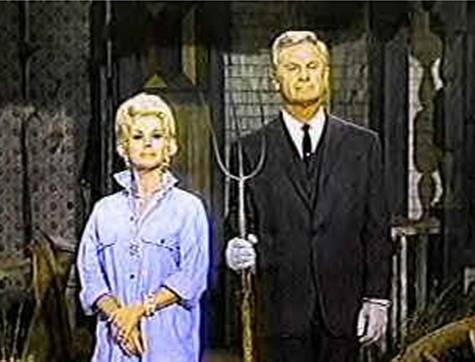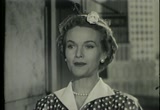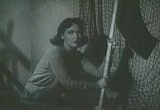Podcast: Play in new window | Download
Subscribe: Apple Podcasts | Spotify | Amazon Music | iHeartRadio | Email | TuneIn |
I’ve taken a look at shows that feature Jazz and Country-Western Music. Now to look at the rest of the music out there beginning with shows that while not music shows feature regular music. :
Music, It’s Part of the Show:
Detective Shows
Pete Kelly’s Blues: Jack Webb, while continuing to produce Dragnet, also made a 1951 mid-summer replacement, Pete Kelly’s Blues which starred Jack Webb as a speakeasy coronet player who was always getting into trouble during the roaring twenties. Each episode would also include around three sets from Kelley’s band. Occassionally, a heavy will wait for the band to play its number before going after Pete.
Richard Diamond was Dick Powell’s greatest detective vehicle and somewhat unusual. Richard Diamond’s adventures were some of radio’s most violent. However, the show was at its most unusual, when after three or four corpses had been cleared away, Richard Diamond began to sing. In some ways, the show represented a union of Powell’s two stage personas. His earlier, light comedic leading man and his middle aged hardboiled characterization. Of course, while Powell sang a lot of typical crooner songs, he also would mix it up with a cowboy lullaby, a Hawaiian Christmas song, and once he even sang in Yiddish. The singing was usually only a minute or so, but it preserved the image of Powell as a versatile entertainer. One fan has created a zipped collection with all the singing interludes in Richard Diamond.
One show, you might expect to have music in it doesn’t. While Frank Sinatra was Rocky Fortune, he never broke out into song
Sitcoms
While Comedy Variety shows had lots of music (more on that later), sitcoms had much less use. Shows like Life of Riley, My Favorite Husband, and Life with Luigi had little use for music other than as themes.
Harold Peary’s sitcoms stand out from this trend. On numerous episodes of the Great Gildersleeve from 1941-50, Peary would sing a beautiful song in his crooning voice. This could occur any time in the program. Reportedly, it was the lack of singing opportunities that led Peary to quit and create the Harold Peary Show where he sang much more frequently. Unfortunately, the singing was great, but the Harold Peary Show ended after one season and Peary was relegated to character actor status for the rest of his career. He was a good singer, but comedy was his bread and butter.
A 1942 episode of The Great Gildersleeve which features Peary singing
The Audition show for The Harold Peary Show features a song from Peary.
Westerns
Roy Rogers hit the air as host and star of a Western Variety show. Over time, the show morphed into having an actual plot, but would always including plenty of cowboy music too.
The Comedy Variety Shows
In the pre-War and World War II era, most of the famous comedians on radio led Comedy variety shows that included comedy sketches along with the singing of the show’s regular singer, and usually a piece performed by an orchestra. This formula was used by too many shows to count. Abbott and Costello, with Freddy Rich and his orchestra. Bob Hope had Frances Langford singing, as well as Skinnay Ennis, and Ozzy Nelson, at one point sang for Red Skelton’s show in the early 40s. The swingy and always fun to listen to Connie Haines was a fixture on early Abbott and Costello shows. A sampling of the songs of Haines, which have a very distinctive rhythm was collected at the Internet Archive and is available within the great episodes of the show themselves. Her “Trolley Song” is a classic.
In the late 1940s and early 50s, Dean Martin and Jerry Lewis’ comedy show usually featured a song from Martin.
Musicals:
Shows that did plays like Theater Guild on the Air that adapted plays or Lux Radio Theater, which adapted movies would adapt musicals to the radio, however there were two series that actually regularly performed full-blwon musicals for the radio. The Railroad Hour adapted a wide variety of Broadway-style and Hollywood musicals. All-star Western Theater did more Western musicals.
Other Music Shows
The Bell Telephone Hour provided regular concerns to Americans over the radio from 1940-58. The Shell Chateau was an hour long musical variety show from 1935-37 that was at one time hosted by Al Jolson and featured a variety of different music styles and musicians. Music Depreciation features classic music with a humorous introductions.
Your Hit Parade was the original top 15 countdown show, lasting an hour. Alka Seltzer Time was a regular daily 15 minute radio show featuring up-beat music. Before legendary guitarist Les Paul made his way to television for a long-run, he had his own 15 minute radio show.
The Squibb Show is perhaps the best 15 minute show I’ve heard with its use of a variety of beautiful music and style.
Finally, Moon River was a radio show sponsored by a mattress company featuring the reading of poetry to soft music. A nice way to go to sleep to be sure.
Of course, we’ve barely scratched the surface of the many and varied old time radio shows out there, and there’s quite a bit that’s not available on the Internet Archives, but I hope that lead some music lovers to a little bit of listening pleasure.




 While the radio show was declining, CBS was bringing the North’s to Television with Richard Denning and Barbara Britton in the title roles. This version of the North’s would be quite different. In the premiere episode, The Weekend Murder, Pam solves the murder case while Jerry is sleeping. This was an indicator of how the series would go. Jerry North was the sidekick.
While the radio show was declining, CBS was bringing the North’s to Television with Richard Denning and Barbara Britton in the title roles. This version of the North’s would be quite different. In the premiere episode, The Weekend Murder, Pam solves the murder case while Jerry is sleeping. This was an indicator of how the series would go. Jerry North was the sidekick.